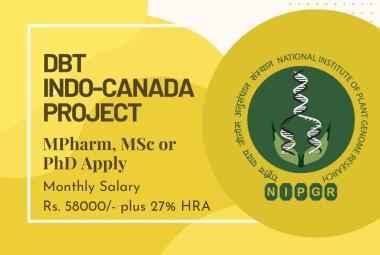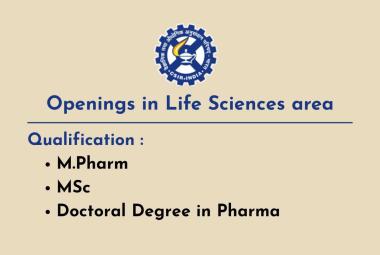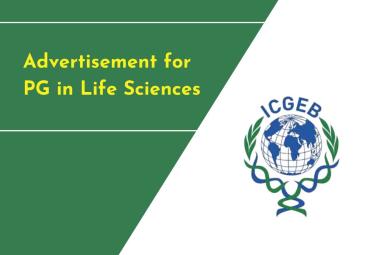About Authors:
Md. Sofiqul Islam, Madhusudan N. Purohit
Department of Pharmaceutical Chemistry,
JSS college of Pharmacy, Mysore 570015
Quinoline and its derivatives are well known for their antimalarial and antibacterial propertites. A number of quinoline derivatives are known to possess antimicrobial, antitumor, antifungal, hypotensive, anti HIV, analgesics and anti-inflamatory activites. Application of quinoline derivative are fast spreading from antimalarial drugs to almost every branch of medicinal chemistry. Substitution of halogen group in a suitable position of a bioactive molecule is found to exert a profound pharmacological effect.
Therefore, an attempt was made to study the antibacterial and antifungal activity of a series of quinoline 4-carboxylic acid derivatives. In the present investigation, two substituted quinoline carboxylic acids (Ia-b) were synthesized using Doebner synthesis. The target compounds were prepared by reacting I with different amines in presence of dicyclohexylcarbodiimide (DCC).
The newly synthesized compound are characterized by spectral ( IR, 1H NMR and Mass ) data. The purity of the compounds was confirmed by TLC. Thesynthesized compounds were evaluated for their antibacterial and antifungal activities by cup plate method for various pathogenic microorganisms namely (S.aureus, E.coli and Candida albicans). Minimum inhibitory concentration(MIC) of the synthesized compounds was determined by two-fold serial dilution method.
[adsense:336x280:8701650588]
REFERENCE ID: PHARMATUTOR-ART-1136
Introduction
Application of quinoline derivative is fast spreading from classical antimalarial therapy to almost every branch of medicinal chemistry. These compounds are associated with different biological activities, such as antiplatelet, antibacterial, and anti HIV. Hence it is proposed to prepare few novel quinoline derivatives and evaluate their in vitro anti bacterial and anti fungal activity against various pathogenic microorganisms.
Experimental Methods:
(1) Synthesis of 2-phenylquinoline-4-carboxylic acid 1a
In a 500 ml RBF equipped with a reflux condenser, pyruvic acid (22 ml, 0.25 mol) in 200 ml of ethanol and benzaldehyde (24 ml, 0.236 mol) were placed. The mixture was heated to the boiling point on a water bath and slowly, with frequent shaking a solution of pure aniline (23 ml, 0.248 mol) in 100 ml of ethanol was added. The addition was done for 1 h. The mixture was refluxed for about 3 h and allowed to stand overnight. The crude compound was filtered off on pump and recrystallised using hot ethanol.
Similarly the compound Ib was prepared using anisladehyde and 4-fluoroaniline.
(2) Synthesis of substituted amines (IIa-c)
A mixture consisting of (1mol) of ketone, 0.2 mol of thiourea,and 0.2 mol of bromine were added drop wise very slowly. After the addition of bromine the reaction mixture was heated on water bath over night, and water was added to it and again heated until most of the solvent has gone into solution. The reaction mixture was filter when hot filtrated was cooled it was made alkaline with concentrated ammonium hydroxide to separate 2-amino-4-phenylthiazole. The product was filter, washed with alcohol and dried over P2O5. It was recrystallized from ethanol, as colourless needles.
(3) Synthesis of 2-(aryl), 4 (N-(substituted) carbamoyl) quinoline derivatives.
The solution of 0.01 mol of appropriate amines (IIa-c) in 50 ml of DMF was addaed to 2.8 ml of TEA at 0 °C with stirring. The solution of Ia/ib in 50 ml of DMF was added to the above mixture and DCC (2.1 g) was with stirring 24 h. After 24 h, the reaction mixture was filtered. To the filtrate, water was added in equal proportions and the aqueous layer was washed with ether (3 × 50 mL). The organic layer was separated and dried over anhydrous Na2SO4 filtered and evaporated under vacuum. The product obtained was dissolved in chloroform, washed with 10 % HCl, saturated NaHCO3 solution and water (25 mL each) followed by evaporation under vacuum. The crude product was recrystallized from a mixture of ethyl acetate and petroleum ether.
Antibacterial Activity
The compounds were tested in-vitro for their antibacterial activity against two microorganisms viz. Escherichia coli and Staphylococcus aureus
Antifungal Activity
The compounds were tested in-vitro for their antifungal activity against Candida albicans.
Results and Discussion
CompoundIIIa
Chemical name:2-Phenyl-N-(1, 3, 4-thiadiazol-2-yl) quinoline-4-carboxamide
IR (KBr) cm-1: 3070(Ar-H), 3400(NH), 1280(C-S), 1675(C=O), 848(C-N)
1H NMR (DMSO, δ ppm): 9.2(s, 1H CONH), 6.8-7.7(m, 11H, Ar-H)
LC-MS: 333(M+H)+
Conclusion:
The synthesized quinolines derivatives exhibited mild to moderate anti bacterial and anti fungal activities as indicated by the MIC values between 50-100µg/ml.
References:
1) Shivarama Holla B, Narayana Poojary K, Synthesis, characterization and antibacterial activity studies on some fluorine containing quinoline -4-carboxylic acids and their derivatives, Indian journal of chemistry, vol.44B,October 2005, pp 2114-2119.
2) Pattan SR, Dighe NS, Nirmal SA, Synthesis and Biological Evaluation of Some Substituted Amino Thiazole Derivative,Asian J. Research Chem. 2(2): April.-June, 2009, 196-201.
3) Rajiv Dahiya, Anil Kumar and Rakesh Yadav, Synthesis and Biological Activity of Peptide Derivatives of Iodoquinazolinones / Nitroimidazoles, Molecules 2008, 13, 958-976.
NOW YOU CAN ALSO PUBLISH YOUR ARTICLE ONLINE.
SUBMIT YOUR ARTICLE/PROJECT AT articles@pharmatutor.org
Subscribe to Pharmatutor Alerts by Email
FIND OUT MORE ARTICLES AT OUR DATABASE









